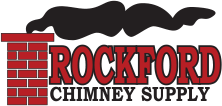Hi My woodstove in the alcove is complete and beautiful. Thanks again for all of the help with design and safety issues. I am now reroofing the house (they went hand in hand) and will be buying a chimney cap. The chimney is actually a steel framed chase with durock exterior and has two flues coming out the top (the kitchen 6" vent and the 8" metalbestos insulated flue) and they are about 4.5" apart, which does not allow for conventional rain collars. I am going to cover the durock in a clinker brick veneer and will need a cover for the chase. As the home is a 1910 craftsman, I figure copper would look better than stainless but am worried about galvanic corrosion with the copper and galvanized ventpipe or raincaps. I will probably have collars put on the copper chase cover but am still worried about what to do to avoid the galvanic reaction. Also, when looking at Rockford and others' descriptions of sending measurements, it appears that they want the holes about .5" larger than diameter of pipe/flue and I worry that caulking will fail in that large a gap (and imagine backer rod cannot be used touching insulated metalbestos). With a collar on a chase cover, is there still a raincap and are those done in copper too? Any recommendations/ideas/suggestions are greatly appreciated and again thanks for all the help getting to this point.
copper chimney cap and galvanic corrosion
- Thread starter robman
- Start date
-
Active since 1995, Hearth.com is THE place on the internet for free information and advice about wood stoves, pellet stoves and other energy saving equipment.
We strive to provide opinions, articles, discussions and history related to Hearth Products and in a more general sense, energy issues.
We promote the EFFICIENT, RESPONSIBLE, CLEAN and SAFE use of all fuels, whether renewable or fossil.


![[Hearth.com] copper chimney cap and galvanic corrosion [Hearth.com] copper chimney cap and galvanic corrosion](https://www.hearth.com/talk/data/attachments/319/319633-b1804110e179a38bc3b9a0748b16e1d1.jpg?hash=QLxYPh29NN)
